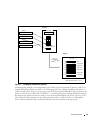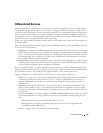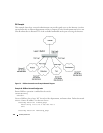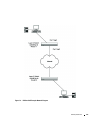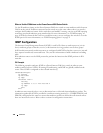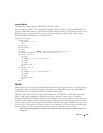
Multicast 149
8
Multicast
This section provides configuration scenarios for the following features:
• "IGMP Configuration" on page 150
•"IGMP Proxy" on page 151
•"DVMRP" on page 152
• "PIM" on page 154
• "Multicast Routing and IGMP Snooping" on page 157
Overview
IP Multicasting enables a network host (or multiple hosts) to send an IP datagram to multiple
destinations simultaneously. The initiating host sends each multicast datagram only once to a
destination multicast group address, and multicast routers forward the datagram only to hosts who
are members of the multicast group. Multicast enables efficient use of network bandwidth, as each
multicast datagram needs to be transmitted only once on each network link, regardless of the
number of destination hosts. Multicasting contrasts with IP unicasting, which sends a separate
datagram to each recipient host.
Hosts must have a way to identify their interest in joining any particular multicast group, and routers
must have a way to collect and maintain group memberships: these functions are handled by the
IGMP protocol in IPv4. In IPv6, multicast routers use the Multicast Listener Discover (MLD)
protocol to maintain group membership information.
Multicast routers must also be able to construct a multicast distribution tree that enables forwarding
multicast datagrams only on the links that are required to reach a destination group member.
Protocols such as DVMRP, and PIM handle this function.
IGMP is a multicast group discovery protocol that is used between the clients and the local
multicast router. PIM-SM, PIM-DM, and DVMRP are multicast routing protocols that are used
across different subnets, usually between the local multicast router and remote multicast router.



